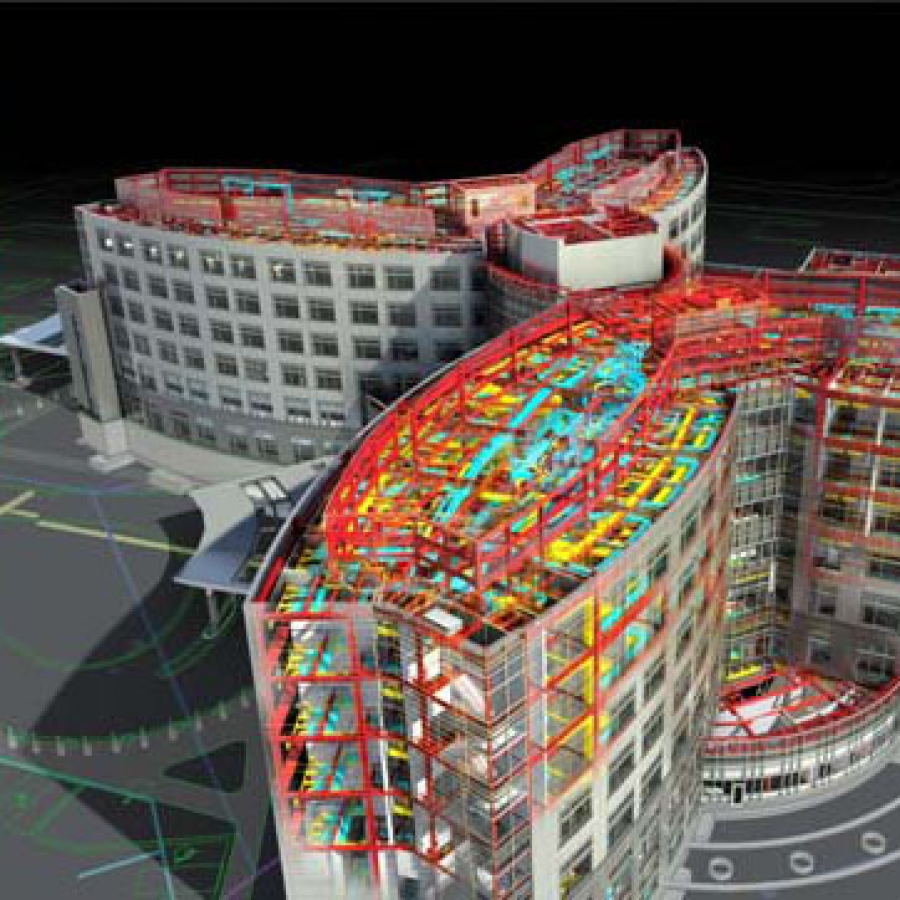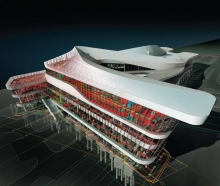Video
Architects, engineers, and contractors streamline their process to ensure a quick delivery of the Nebraska Cornhuskers’ new home, Pinnacle Bank Arena.
Along the western edge of downtown Lincoln, Nebraska, lies the historic Haymarket District. An industrial and commercial area in use since the 1870s, the district had nevertheless become blighted and run-down. In the 1980s, the Haymarket District began to attract some mixed-use development, including art galleries, coffee houses, and residences. In more recent years, rehabilitation efforts have extended westward, and an official redevelopment plan was established.
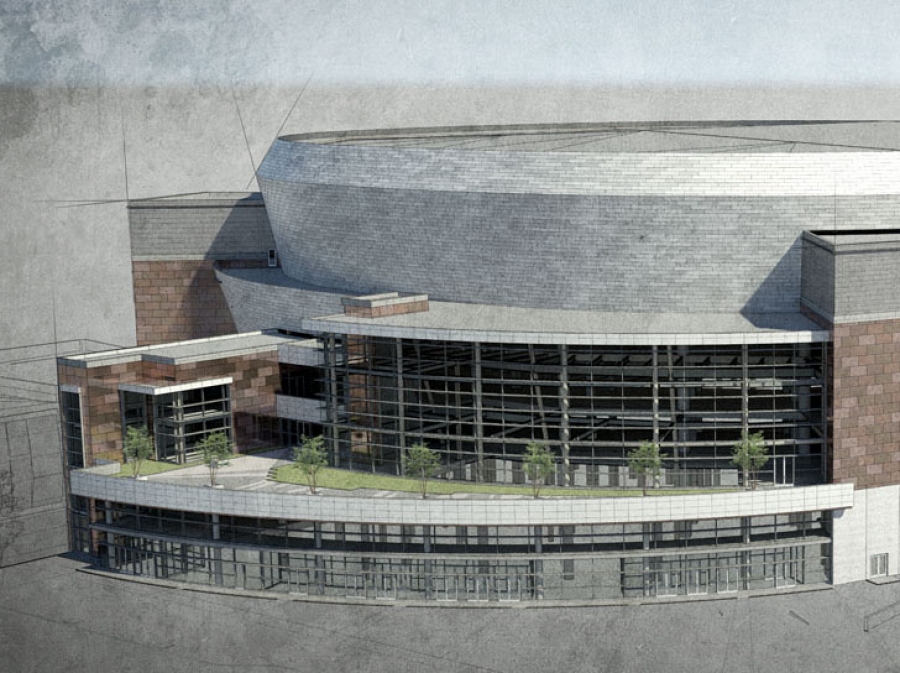 Rendering courtesy of DLR Group
Rendering courtesy of DLR Group
A Rail Yard Offers the Ideal Site
From the outset, a cornerstone of the West Haymarket Redevelopment plan was to include a civic arena in the district. After examining various locations, a feasibility committee identified the ideal spot to be the rail yard bordering downtown. The catch was that two rail lines – one running along the eastern side of the site and one along the western side – were still in use by the Burlington Northern Santa Fe Railway (BNSF). The City of Lincoln negotiated the purchase of acreage from BNSF, and, after voters approved the arena project in May 2010, the deal was finalized. The agreement included having the city finance the relocation of BNSF’s existing rail lines.
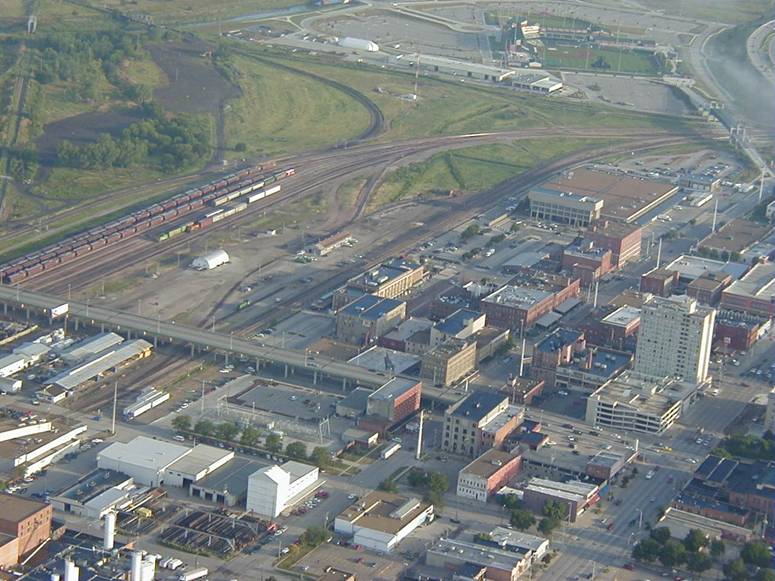
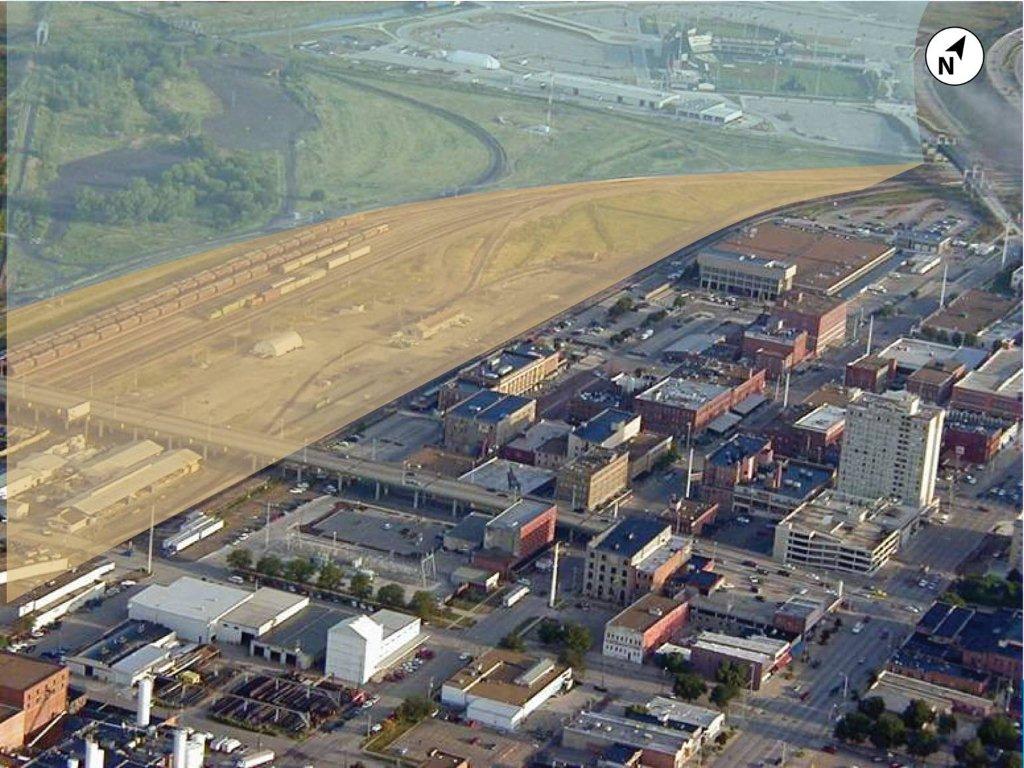
However, relocating rail lines is a time-consuming task, and Lincoln was eager to move forward with its arena. So it fell to the architects, engineers, and contractors to accomplish the seemingly impossible: to design and even begin construction on a major structure before the land upon which it sits could be fully cleared. The inflexibility of an arena’s program and its general massing requirements only added to the challenge. The finished arena will seat 16,500. Its design also allows for future expansion of up to 1,500 additional seats.
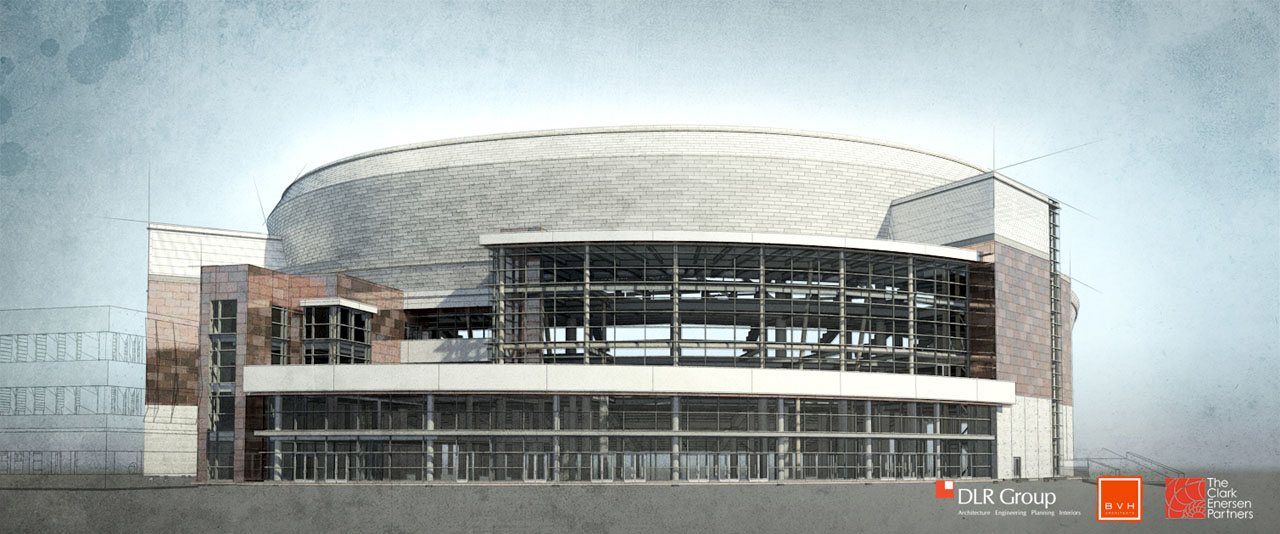
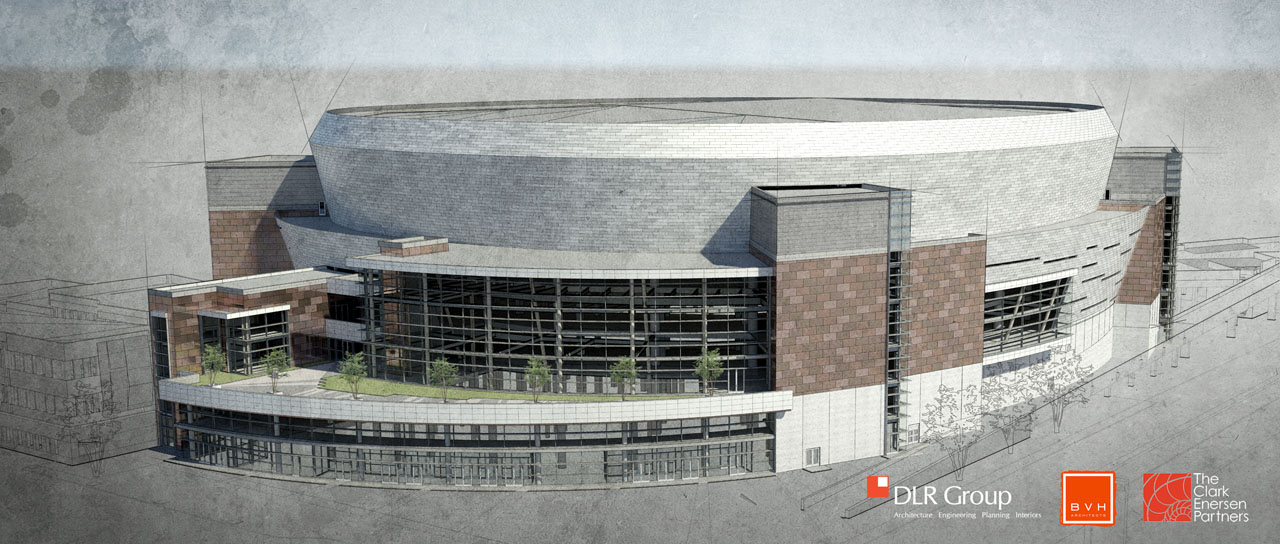
According to Erleen Hatfield, partner-in-charge of the project for Buro Happold, who provided structural engineering services for the arena, the architects, DLR Group, designed the arena in such a way that the majority of its construction could take place simultaneously with the removal of the tracks. Unused tracks in the center of the site were the first to be removed, which meant that this portion of the land was free for construction well in advance of the outer area. “So the arena became a bit of a hybrid,” said Hatfield. “In the center, it is concrete. But its outer structure is made of steel, and steel was chosen because it is faster to erect.” Steel members will be prefabricated off-site and will arrive ready to assemble once the edges of the site are cleared. “The minute the tracks are gone, the pile machine will come in and start work,” said Hatfield. By allowing the site constraints to determine the building’s layout and material choices, the project should proceed on schedule for its anticipated 2013 completion.
BIM Supports Coordination
“Buro Happold’s structural engineers use Revit on every project...but when the architect and MEP are using it, too, it makes the project go so much faster. You can just drop a screen shot in an e-mail, making it faster to share and to coordinate.” — Erleen Hatfield
Only by leveraging the latest computer and communication technologies, and by beginning their collaboration early on, was the team able to accommodate such a tight schedule. Mortenson Construction, a company that has extensive experience in designing sports facilities, and the Lincoln-based Hampton Enterprises were selected to build the arena as early as November 2010.
“The initial layout was a challenge,” affirms Hatfield. “We worked with the architects. This building has a 320’ span, with 36’ deep trusses – and this is all fit between the two tracks.” While there are precedents in arena design for having a concrete structure with a steel roof system, it is atypical to combine steel and concrete for the lower portion of an arena, continues Hatfield.
During the early stages of design, information was exchanged quickly and decision making was expedited by using Revit Building Information Modeling (BIM) software. “Buro Happold’s structural engineers use Revit on every project,” says Hatfield. “But when the architect and MEP are using it, too, it makes the project go so much faster. You can just drop a screen shot in an e-mail, making it faster to share and to coordinate.” BIM models will be passed along to the contractors, who can continue to use them to streamline efforts.
Groundbreaking for the concrete center of the arena began in mid-September 2011. Construction on ancillary spaces such as the concourse and stair towers, like the steel shell of the main structure, will be built after track relocation.
The West Haymarket Arena, which will be tenanted primarily by the University of Nebraska–Lincoln’s men’s and women’s basketball teams, is expected to spur development of the downtown area as well as enrich the university’s basketball program. Lincoln will not lose any time in reaping the economic benefits of its new arena; the lesson learned from this project may be that expedited construction schedules can have a ripple effect that extends to the entire community.
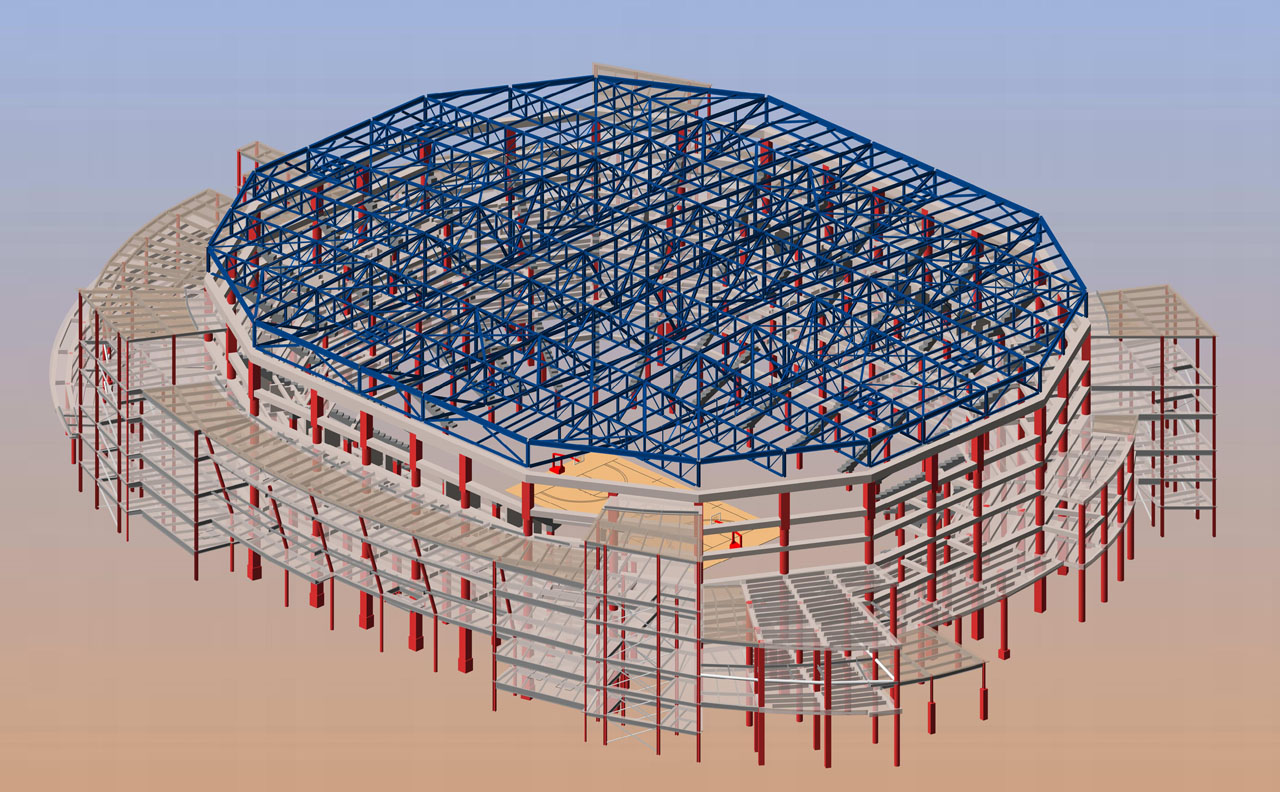

Kristin Dispenza
Kristin graduated from The Ohio State University in 1988 with a B.S. in architecture and a minor in English literature. Afterward, she moved to Seattle, Washington, and began to work as a freelance design journalist, having regular assignments with Seattle’s Daily Journal of Commerce.
After returning to Ohio in 1995, her freelance activities expanded to include writing for trade publications and websites, as well as other forms of electronic media. In 2011, Kristin became the managing editor for Buildipedia.com.
Kristin has been a features writer for Buildipedia.com since January 2010. Some of her articles include:





